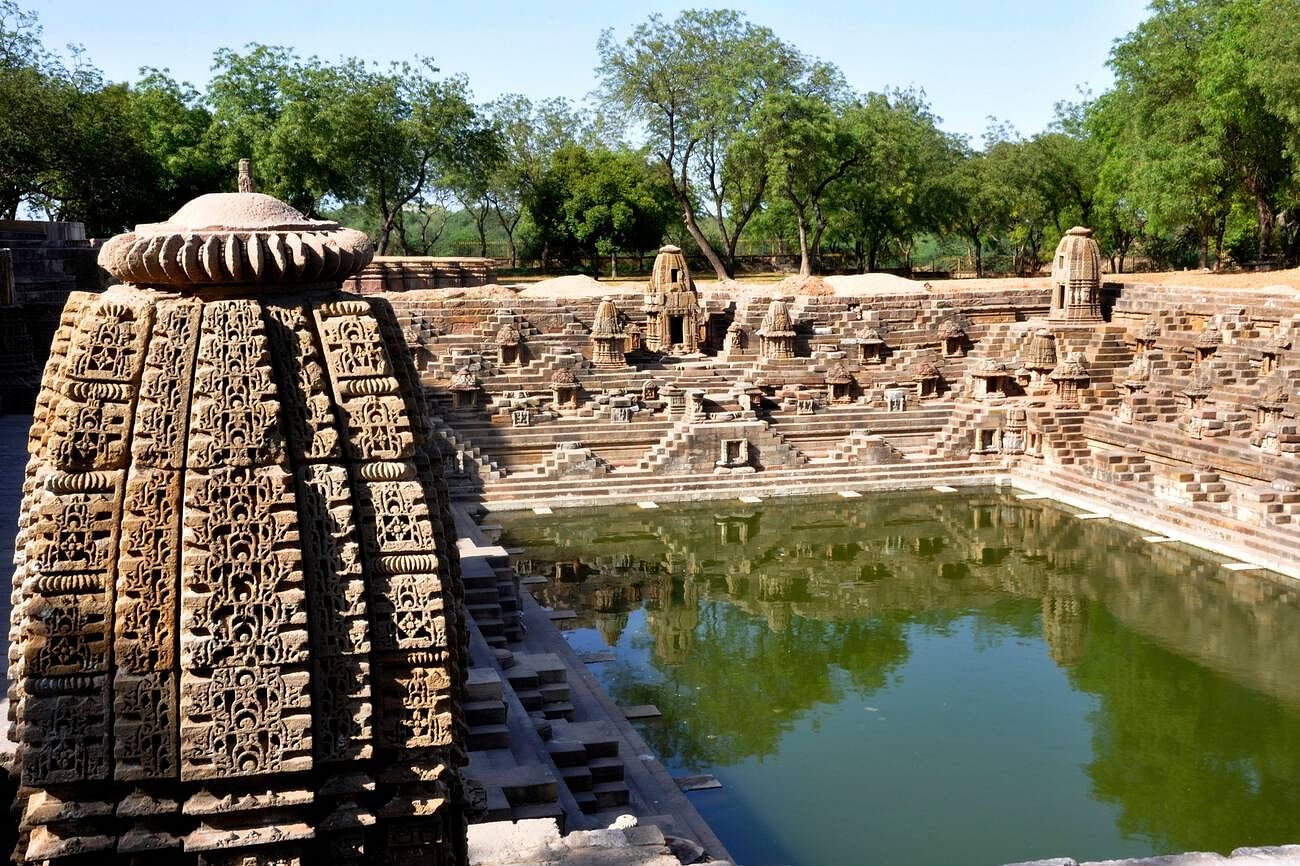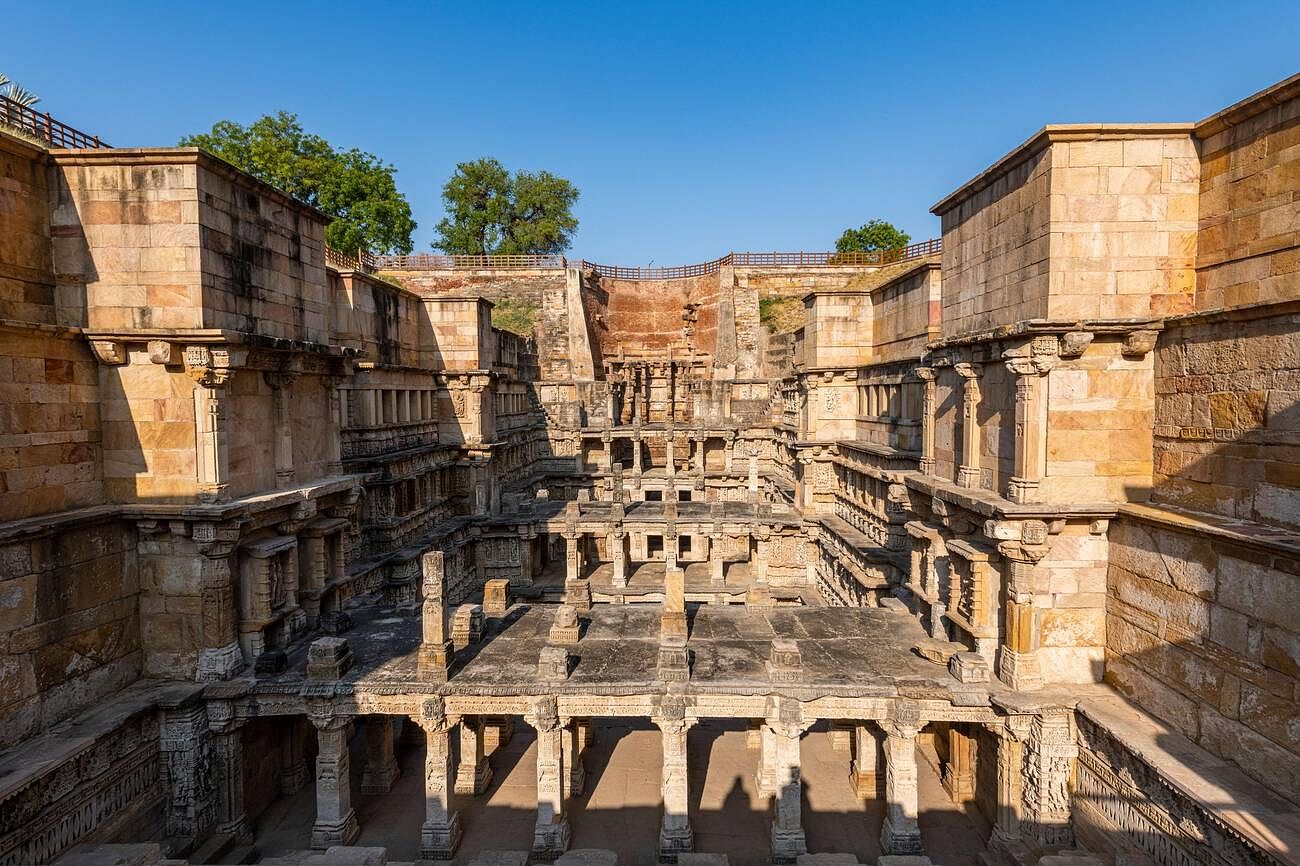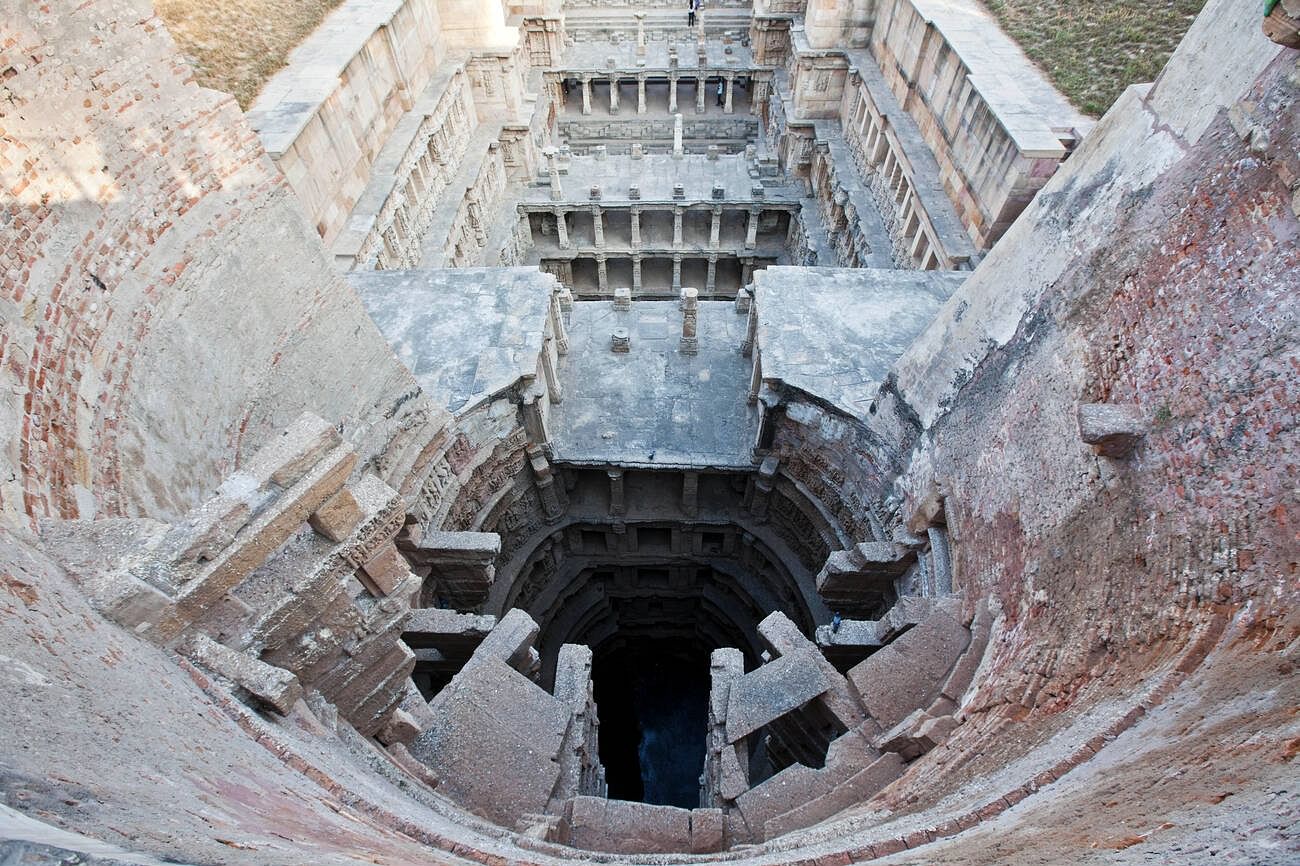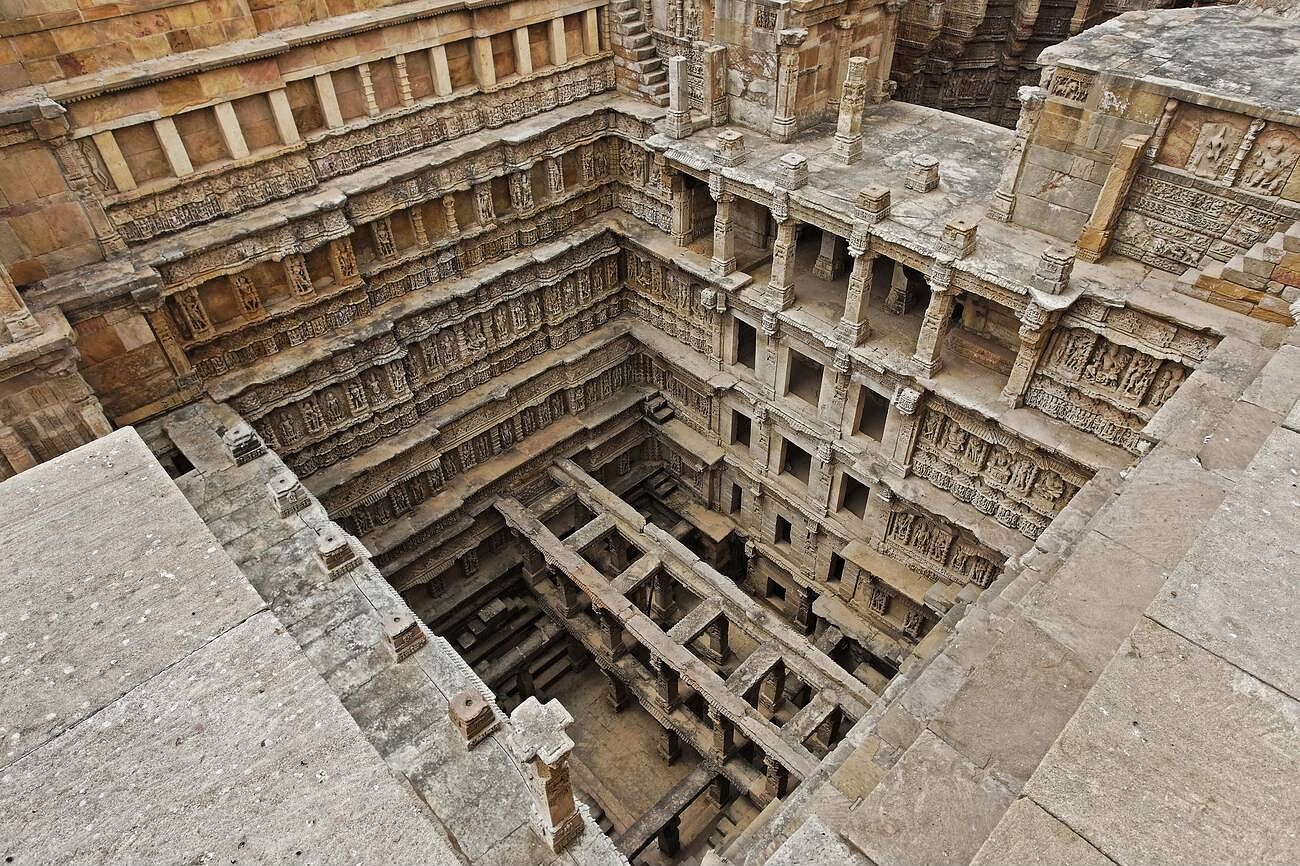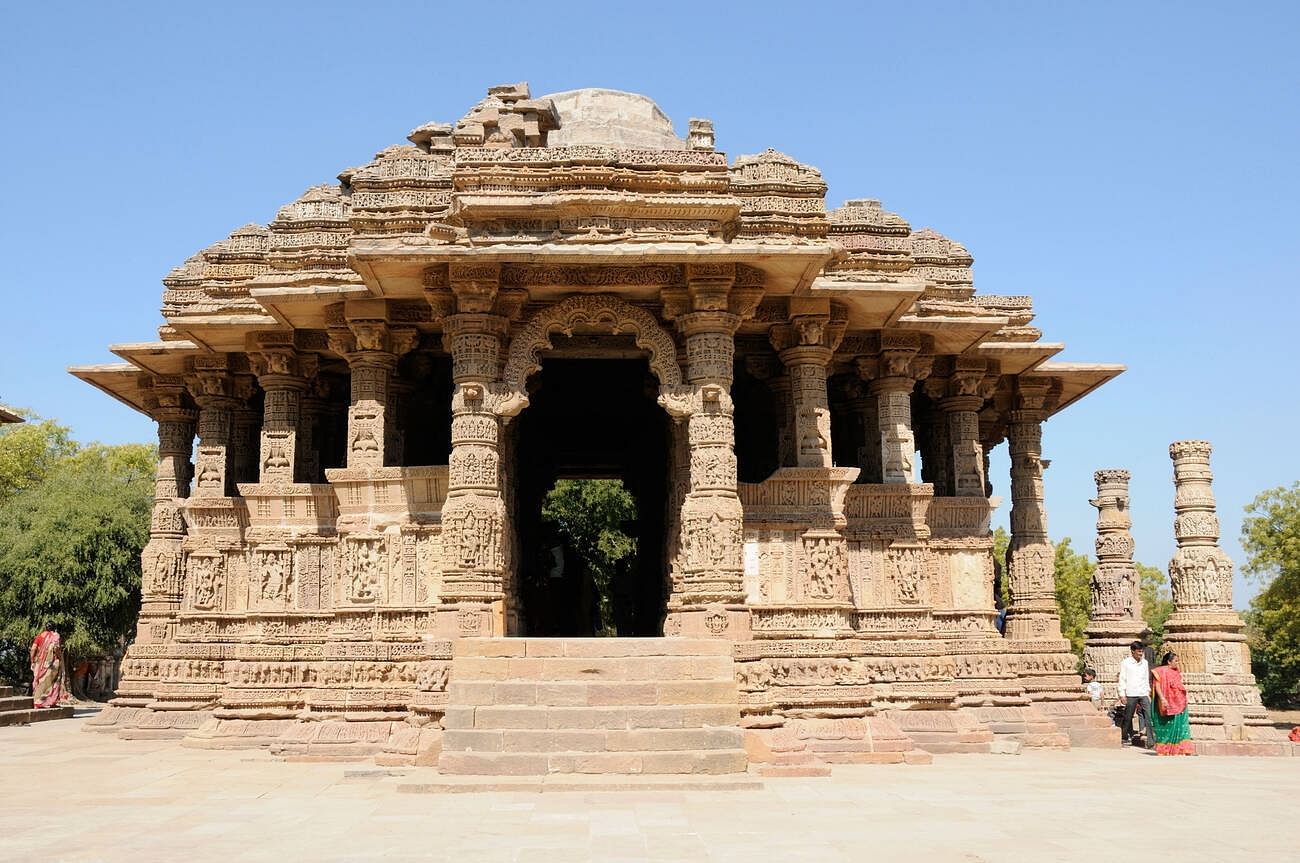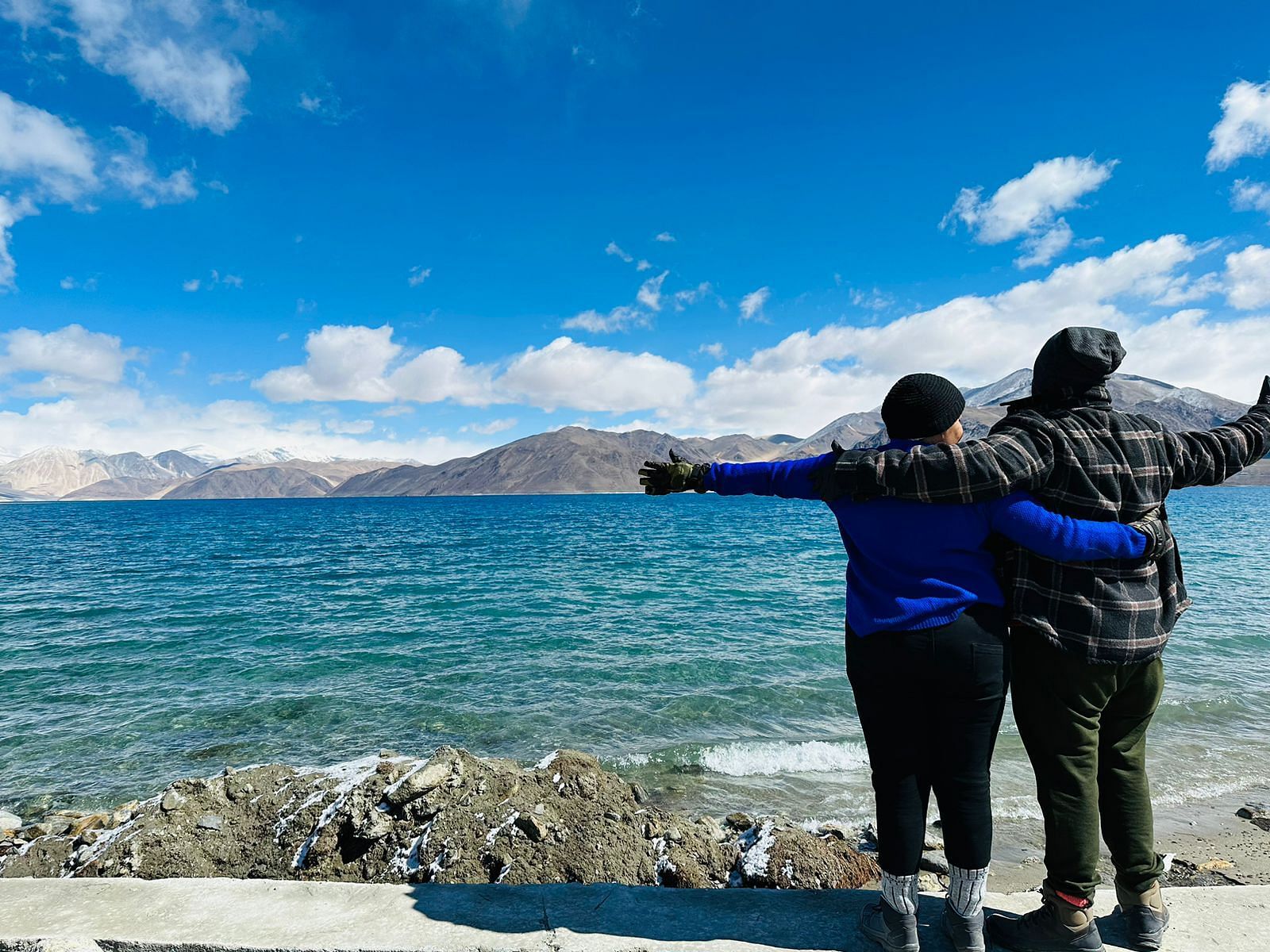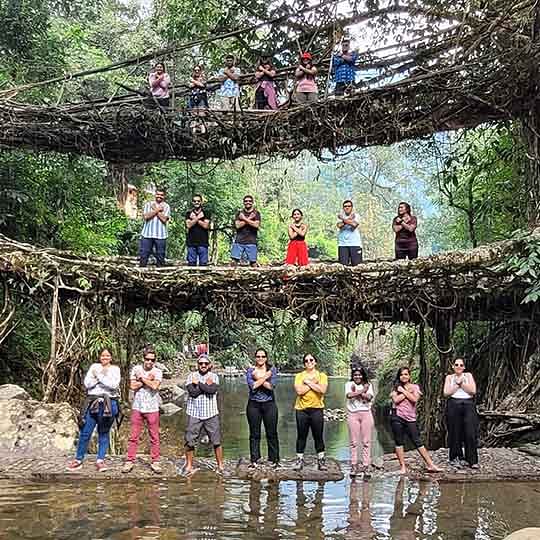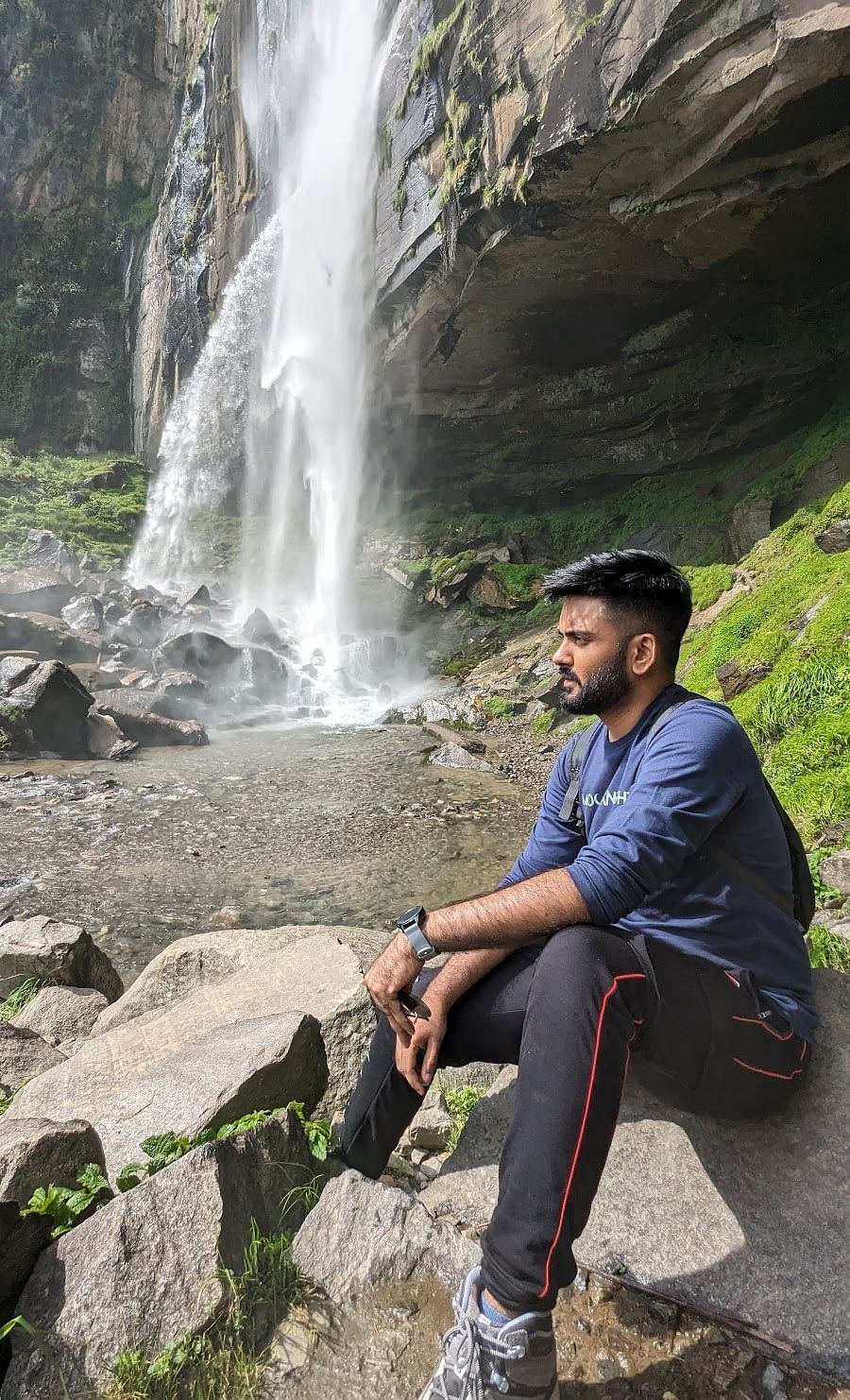Everyone’s heard of the Taj Mahal – how Shah Jahan built that grand monument for Mumtaz, setting the ultimate ‘romantic husband goals.’ But have you ever heard of a queen building something amazing for her king? Well, Gujarat’s Patan has just that – Rani ki Vav!Yes, you heard it right – a queen built something for her king! Who says women can’t show love in grand style too? Stepping into this stunning stepwell, I was welcomed by intricate carvings and rows of beautifully crafted pillars. Each step reveals delicate sculptures of gods, goddesses, and mythical creatures that feel almost alive. No wonder this masterpiece earned a place on the new 100-rupee note – it’s a tribute as unforgettable as the love story of Rani ki Vav.
When you hear stories from a place, it transforms from just a location into much more! Rani ki Vav holds many stories within its walls. Who built it and why? It’s a love story more beautiful than any Bollywood movie! Come, let’s dive into the incredible story of Rani ki Vav Gujarat!
A Love Story Etched in Stone
Once upon a time, Queen Udayamati was deeply in love with her husband, King Bhimdev. They shared a bond that seemed unbreakable, ruling the land with grace and kindness. But then, tragedy struck when the king passed away unexpectedly, leaving Udayamati heartbroken and lost without her beloved partner.Determined to keep her king’s memory alive, Udayamati decided to build Rani Ki Vav. This wasn’t just any old stepwell; it was like a love letter carved in stone! She wanted to make sure the people of Patan had a place to get water and solace. Every intricate carving depicted her devotion and the memories they shared, turning her sorrow into something beautiful.
Suggested Read: Tourist Places in Gujarat India: Don’t Miss These Hotspots
Rani Ki Vav was built during the rule of the Chalukya dynasty and is located near the Saraswati River. According to the Prabandha-Chintamani, Udayamati, daughter of Naravaraha Khengara, built this impressive stepwell to outshine the Sahasralinga Tank. This is a key part of Rani Ki Vav history. The construction started in 1063 and took 20 years to finish. Udayamati likely built it in memory of her husband, Bhima I, who ruled from about 1022 to 1064.
Over time, Rani Ki Vav became flooded and buried under silt. In the 1890s, explorers Henry Cousens and James Burgess discovered it mostly hidden, with only part of the well and a few pillars visible. They described it as a large pit about 87 meters (285 feet) deep.
In the 1940s, excavations revealed Rani Ki Vav, and a major restoration was done by the Archaeological Survey of India from 1981 to 1987, during which they found an image of Udayamati. This discovery adds to the rich Rani Ki Vav history.
Today, Rani Ki Vav is celebrated not only for its architectural beauty but also for the story of Rani Ki Vav and the love and devotion it represents. Visitors come from all over to admire this historical landmark, which continues to share the tale of Udayamati and Bhima I, making Rani Ki Vav history a cherished part of India’s cultural heritage.
Suggested Read: Exploring The Fairs And Festivals In Gujarat
Architecture of Rani ki Vav Gujarat
Rani Ki Vav is one of the biggest and best examples of stepwell architecture in Gujarat. It shows the peak of craftsmanship in building stepwells and features the Maru-Gurjara architectural style, which is known for its beautiful details. Rani Ki Vav is classified as a Nanda-type stepwell. It is about 65 meters long, 20 meters wide, and 28 meters deep. The deepest part is the fourth level, which leads to a rectangular tank that is 9.5 meters by 9.4 meters and 23 meters deep. The entrance is on the east side, while the well is at the western end, featuring a shaft.
The stepwell has seven levels of stairs leading down to a deep, circular well. The stepped corridor has sections at regular intervals with pillared, multi-storey pavilions. The walls, pillars, columns, brackets, and beams are decorated with intricate carvings.
The niches in the walls have delicate figures and sculptures, showcasing the remarkable architecture of Rani Ki Vav Gujarat. There are a total of 212 pillars in the stepwell, making it a stunning piece of architecture that reflects the architecture of Rani Ki Vav Gujarat.
It’s not only the story of Rani Ki Vav that draws people in, but also the stunning architecture that makes this gem so intriguing to visit.
Suggested Read:Dada Hari Ki Vav: The Architectural Gem Of Medieval Era
Cultural Importance of Rani ki Vav Gujarat
Rani Ki Vav has been recognized as a Monument of National Importance and is safeguarded by the Archaeological Survey of India (ASI). On June 22, 2014, it was included in the list of UNESCO World Heritage Sites in India. Additionally, it received the title of India’s “Cleanest Iconic Place” at the 2016 Indian Sanitation Conference.Traditionally, stepwells served as communal spaces where people gathered to draw water, socialize, and escape the heat. Rani Ki Vav Gujarat was a vital part of the community, fostering social interaction and cultural exchange.
Suggested Read: Your Ultimate Guide to Homestays in Diu
Best Time to Visit Rani ki Vav Gujarat
The best time to visit Rani ki Vav Gujarat is during the winter months (November to February). This is when the weather is pleasantly cool, making it ideal for exploring the intricate details of the stepwell.Here’s a breakdown of why winter is the best time:
- Pleasant Weather: The temperature is mild, making it comfortable to walk around and explore the site.
- Clear Skies: Clear skies provide excellent visibility for photography.
- Fewer Crowds: The tourist season is less crowded during these months, allowing for a more peaceful and enjoyable experience.
Avoid visiting during the summer months (April to June) as the heat can be intense and uncomfortable. If you plan to visit during this time, it’s advisable to go early in the morning or later in the evening to avoid the heat.
How To Reach Rani ki Vav Gujarat
Location of the Rani ki Vav: Mohan Nagar Society, Patan, Samalpati, Gujarat 384265Rani Ki Vav is located in Patan, Gujarat, and is well-connected by various modes of transportation. Here’s how you can reach this stunning stepwell:
By Air:
- The nearest airport is Sardar Vallabhbhai Patel International Airport in Ahmedabad, about 125 km (78 miles) away from Patan.
- From the airport, you can hire a taxi or take a bus to reach Rani Ki Vav.
By Train:
- Patan has its own railway station, making it accessible by train.
- Regular trains connect Patan to major cities like Ahmedabad, Mumbai, and Jaipur.
- Once you arrive at Patan Railway Station, you can take a local taxi or auto-rickshaw to reach Rani Ki Vav.
By Road:
- Patan is well-connected by road and can be reached by bus or private vehicle.
- State-run buses and private buses frequently operate from cities like Ahmedabad, Mehsana, and Gandhinagar to Patan.
- If you prefer driving, you can take the NH 47 or NH 348 highways, which are well-maintained.
Local Transport:
- Once in Patan, you can easily reach Rani Ki Vav by hiring an auto-rickshaw or taxi.
- Local transport options like cycle-rickshaws are also available for a more leisurely ride.
Rani ki Vav Visiting Hours
Rani Ki Vav open timings are from 8:30 AM to 7 PM daily, so plan your visit accordingly to explore this magnificent stepwell! Always double-check closer to your visit, as Rani ki Vav open timings may vary on public holidays or special occasions!Suggested Read: 15 Best Things to Do In Gujarat
The Rani ki Vav ticket price for Indian visitors is just ₹40, making it accessible for everyone. For foreign tourists, the entry fee is ₹600. Tickets can typically be purchased at the entrance, so be sure to carry cash, as card payment options might not always be available. Nearby Attractions of Rani ki Vav Gujarat
Rani Ki Vav is a stunning historical site in Patan, Gujarat. Here are some nearby attractions of Rani ki Vav Gujarat:- Patan Patola: Famous for its intricate double ikat silk weaving. Witness traditional weaving and purchase beautiful Patola sarees.
- Sahastralinga Talav: A historic step well with numerous miniature shrines dedicated to Lord Shiva, offering a serene atmosphere.
- Modhera Sun Temple: An impressive 11th-century temple dedicated to the Sun God, known for its intricate carvings. Located about 30 kilometers from Patan.
- Akshardham Temple: A modern temple complex in Gandhinagar, about 60 kilometers from Patan, featuring stunning architecture, beautiful gardens, and cultural performances.
- Sidi Saiyed Mosque: A 16th-century mosque famous for its intricate stone latticework, located in Ahmedabad, about 60 kilometers from Patan.




